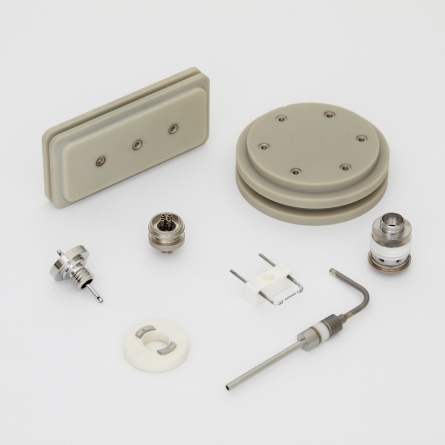Ceramic to metal brazed assemblies
Various methods of assembly exist to bind ceramic to metal. When it comes to make an assembly that can resist to mechanical stresses and/or high temperatures, be vacuum leak tight and withstand corrosive environment, high temperature braze sealing is essential.
MORE INFORMATION
Ceramic-to-metal brazed assemblies are particularly suited for use in such severe environments as, for instance :
- airborne electronics for the aerospace - civilian and military,
- defense devices,
- medical and analytical instruments,
- high-energy physics, high and very high vacuum,
- energy industry.
The product range is not restricted to the here below list since the company mainly manufactures customized ceramic to metal brazed assemblies. For instance :
- high-voltage feedthroughs for the mass spectrometry, ion guns...
- high-voltage and/or high-pressure and/or high-temperature hermetic connectors for the energy industry..
- high-voltage brazed assemblies for electron tubes..
- hermetic feedthroughs for airborne sensors
Not all technical ceramics can be brazed. Those that are suited for brazing are mainly :
- aluminium oxide (alumina)
- sapphire and ruby
- and to a lesser extent, aluminium nitride, zirconia and silicon nitride.
The metal that is directly joined to the ceramic must have a close coefficient of thermal expansion so that the risk of residual stress in the seal that would lead to rupture is minimized. Nickel-iron alloys - Kovar, FN48, FN52… - and titanium are best suited.
But it is also possible to design ceramic-to-metal brazed assemblies using stainless steel, molybdenum, tungsten, niobium, platinum…
All materials


